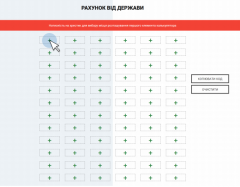Ukrainian Budget Chronicles: The second quarter of 2014
Overall, budget execution during the 2nd quarter of 2014 was marked by a sharp increase in military spending and a dramatic decrease in tax revenue. As a result, the Ukraine’s government revised the budget again as well as proposed a tax reform.
In the 2nd quarter of 2014, the performance of the budget, which has already sustained some cuts, will be strained. Unfortunately, the government has failed to show significant results in countering the tax evasion schemes. Instead, the revenue on the major taxes (VAT and income tax) has continued to fall at an increasing rate against the backdrop of the escalating anti-terrorist operation (ATO). So far the government has managed to compensate this by ad-hoc measures (national currency devaluation, delay of VAT recovery, National Bank’s emission) and increase the revenue part of the consolidated budget of 2Q2014 by 7.8% as compared to the same period of 2013 to UAH 112.3 billion. However, as early as in June, for instance, the National Bank’s limit for the funding of the budget was nearly depleted. At the same time, the debt service costs and social security costs were increasing, while the military needs became a priority. In order to meet the budget restrictions, the government had to postpone many expenditure programs. The expenditures of Ukraine’s consolidated budget over the 2nd quarter 2014 were UAH 132.6 billion, which is 4.4% more than the same in 2Q2013.
The plummeting revenue, military costs, as well as the need to meet the IMF fiscal balance requirements, became the grounds for a new budget revision. The goal of such measure was to fill the budget by new revenue sources (deposit tax, military tax), increased excise rate, rent, and accounting for the EU grants. Besides, the old revenue plan was adjusted to the new economic situation. As regards the expenditures, it was proposed to redirect the majority of resources to the funding of military action. Although the motto of both the first budget cuts (made this March) and the July budget amendments (July) was saving at the expense of administrative costs, significant savings off the state officials were not achieved. A real source for the government’s savings were the subsidies for various sectors, social expenditures, and local budget expenditures. In the aggregate, these measures allowed almost doubling the funding of the army to a record figure of 2% of the GDP, and improved the changes of performing the revenue part of the budget. Additionally, the budget amendments increased the national debt through funding of the deficit of Naftogaz of Ukraine national joint-stock company, which amounts to UAH 960.0 (over 60% of the GDP).
The second quarter was also marked by the commencement of high-profile reform concepts, namely the tax reform and decentralization. However, the majority of the government’s proposals provoke many questions to be discussed. Another problem is that it is unclear how such fiscal reforms are going to be implemented given the problems with the collection of the budget revenue. Therefore, we can hardly expect any actual reform in the nearest future.
Read in detail about the consolidated budget of Ukraine in the second quarter at “Budget Chronicle: 2st Quarter of 2014”.
